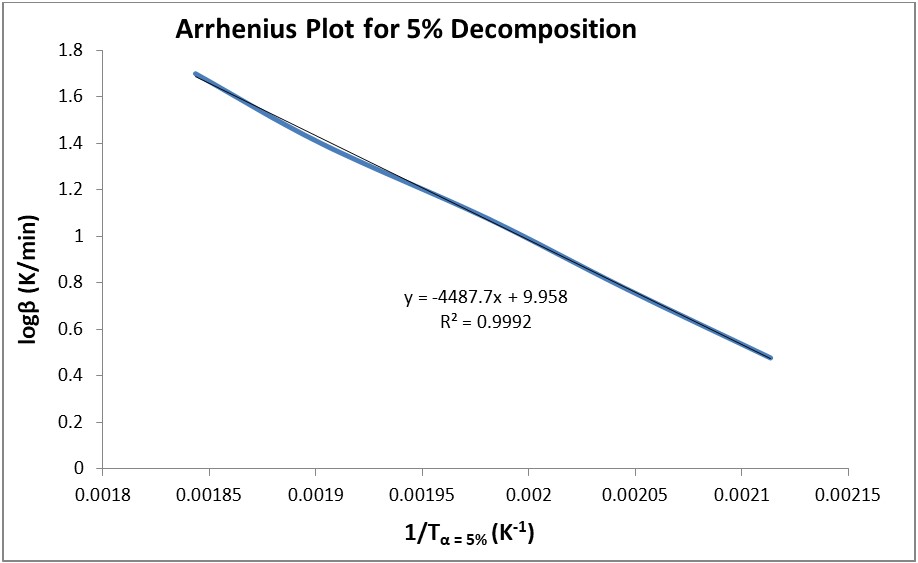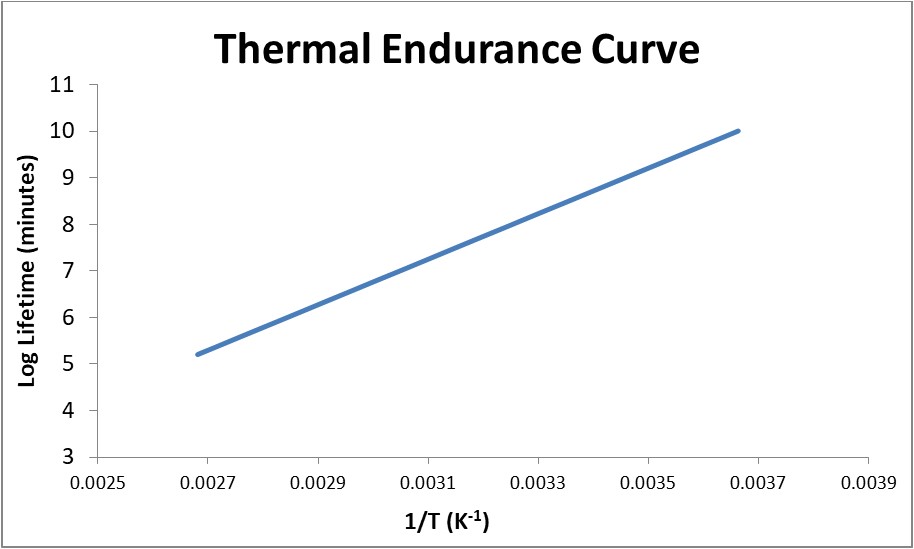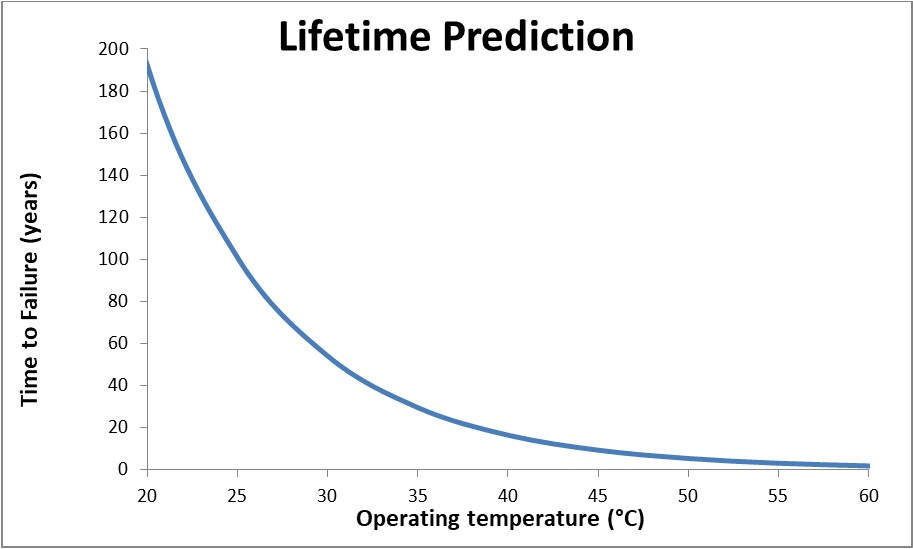TGA Polymer Lifetime Prediction
 Estimation of Polymer Lifetime by TGA Decomposition Kinetics
Estimation of Polymer Lifetime by TGA Decomposition Kinetics
Polymers degrade over time and have a limited useful life. Knowing how long a material will last can be invaluable when designing a safety critical industrial unit (e.g. an aircraft) or planning the maintenance of components that would not be easily accessible (e.g. nuclear application). In 1971 D.J. Toop developed a model to predict the thermal lifetime of electric wire insulation polymers. By using this model the product lifetime of similar fluoropolymer materials, such as PTFE and PCTFE, can be predicted. The lifetime prediction model uses the material’s thermal decomposition parameters which may be determined by thermogravimetric analysis TGA, as shown in the Arrhenius Plot for 5% Decomposition.
 The thermal decomposition parameters (i.e. Arrhenius activation energy and preexponential factor) of the material are determined from a series of tests under accelerated conditions. From this decomposition data a thermal endurance curve is developed for the material, as shown in the left hand Thermal Endurance Curve. Then the product lifetime at the operational temperature can be predicted, as shown in the following below Lifetime Prediction Plot.
The thermal decomposition parameters (i.e. Arrhenius activation energy and preexponential factor) of the material are determined from a series of tests under accelerated conditions. From this decomposition data a thermal endurance curve is developed for the material, as shown in the left hand Thermal Endurance Curve. Then the product lifetime at the operational temperature can be predicted, as shown in the following below Lifetime Prediction Plot.
This procedure is performed according to the Ozawa/Flynn/Wall isoconversional method as described in ASTM E 1641 and ASTM E 1877 and assumes that the decomposition obeys first order kinetics. Note that this life prediction model should only be used if a relationship has been established between the thermal endurance test results and actual lifetime tests.
 TGA can analyse materials that exhibit either mass loss or gain due to decomposition, oxidation or loss of volatiles (such as moisture). Specifically it can provide information on:
TGA can analyse materials that exhibit either mass loss or gain due to decomposition, oxidation or loss of volatiles (such as moisture). Specifically it can provide information on:
- Gelation levels in PVC and its associated 3-D molecular structure and mechanical properties.
- Melt viscosity and Glass Tranistion Temperature Tg for monitoring polymer crystallinity, in polyphenylene sulphide PPS for example.
- Comparative levels of processing oils and elastomers present in blended rubber.
- Degree of polymer degradation by determining changes in peak melt temperature with oxidation.

